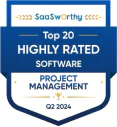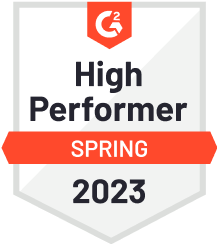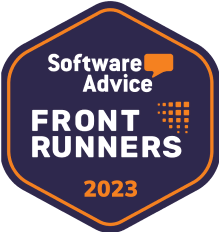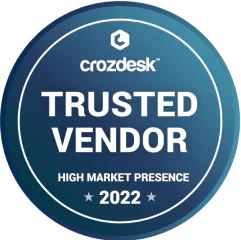Recognized by leading industry leaders






As someone who has put your trust in us, we are here to help you find the best software. We are committed to providing you with information to make a well-informed decision.
On our part, we feel it is important that our readers know what process we follow to select and test apps. Before going into a detailed step-by-step process, let’s first discuss why you can trust us!
We follow a simple, streamlined, and comprehensive process to select and test apps: Research, Shortlist, Test, and Verdict. Here is a step-by-step breakdown of our software review methodology:
First of all, for any software review and comparison article, we define “the category” of the software.
For example:After defining the category, we try to develop an in-depth understanding of the common pain points of users, the solutions users need, and what an ideal software in this category should offer.
Once we have developed an understanding of the software category, we research publicly available information to identify the most necessary features of the software in the defined category.
In our research, we take into account insights from:
This helps us identify what features most people find necessary and create a list of the most important features of the software.
As software decision-making goes beyond features and functionalities, we define the factors that are important and matter to users. We take into account ease of use, support, pricing, and any other factor specific to that category.
Let’s understand what we mean by the other specific factor.
For every software category, some key decision points vary. For example, if we are writing a review article on ‘the 10 best team collaboration apps’,we know for this category, “minimal learning curve” is a key decision point.
Similarly, if we are writing a review article on ‘the 10 best project management software’, we know for this category, “effective data management” is vital.
For small businesses, we know that ‘value for money’ is the most important. Whereas, for enterprises, an ‘uptime service level agreement’ is more important than software being cheaper.
Thus, this selection of specific criteria helps us make our review of the software apps comprehensive.
Here is what our final criteria for reviewing and evaluating software looks like:
We know how critical it is to make the right decision when selecting project management software. Thus, we invest hours in deep research to help our readers make better software purchasing decisions.
We shortlist the best 10-20 software from hundreds of apps based on our research. We take into account real-user reviews, online discussions and forms, expert opinions, the company’s official website, and various AI tools to draw out insights.
This extensive research gives us insights into how each software performs and helps us shortlist a comprehensive list of apps to test in the defined software category.
We evaluate the practicality and efficiency of the software using hands-on testing.
For the shortlisted apps, we follow a simple yet rigorous process for testing.
Our hands-on testing process includes:
This helps us gain an in-depth understanding of the software’s features, interface, onboarding experience, and user experience in an actual working environment.
We test the apps based on the criteria we set up at the beginning to ensure the most accurate, comprehensive, and relevant software reviews. Here is what we do in the testing phase:
Our purpose is to find out how promising a feature performs in a real scenario. We log notes in the spreadsheets for every feature of each tool to provide an in-depth comparison of the real capabilities of the tools.
We create a project and collaborate with the team. We evaluate the software’s ease of use, setup, & navigation and learning curve & training requirements.
Based on our team experience, we define:
Customer support plays a huge role in the successful adoption of the tool at the organizational level. We evaluate how easy it is to get help and support from the support team.
We make notes on the quality, effectiveness, and response speed of the support.
Pricing is always a key point of discussion. We consider the following steps while evaluating and comparing pricing:
This analysis helps us find the tools that offer the best value for the money and scale cost-effectively.
We compile all the information in the spreadsheet. Based on our first-hand experience and expertise, real-users' opinions, and expert analysis, we select the best apps and write about them.
To make our review objective, reduce biases, and make it easy for users to decide, we transform the gathered data into a final rating.
We rate each software based on the selected criteria on a scale from 1-5.
For example:
Selected criteria: User experience and learning curve
| Rating | What does it mean |
|---|---|
| (5) | Extremely user-friendly interface. Almost no learning curve. Highly efficient workflows. |
| (4) | Clear and Intuitive UI. Easy to use. Minimal training required. |
| (3) | Simple user interface, but not intuitive. Takes moderate time to learn. Some workflows are inefficient. |
| (2) | Cluttered UI. Usable but cumbersome. Frequent confusion or frustration. |
| (1) | Poor UI. Very difficult to learn and navigate. Basic actions are confusing. Requires extensive training. |
Similarly, for each criterion (features, pricing, support), we rate each software on a scale from 1-5. We combine all the scores into a final rating and calculate the overall rating of each tool.
For example:
Note: It is important to keep in mind that ratings are based on subjective user experiences. The original user experience might differ based on factors like industry, professional qualification, technical literacy, experience, and unique circumstances. The purpose of objective criteria is to reduce biases and make the rating most standardized and objective. Also, the weighted score of each criterion might or might not be equal for all organizations. For example, a weighted scoring model can look like: Features (50%), Usability (30%), and Value (20%).
To account for subjectivity, it is important to test all the apps before making a final decision by enrolling in a free trial.
We provide you with information in an easy-to-digest format to help you make comparisons easily. We define what the selected app is “best for” and for whom. In our articles, we create ‘tables’ to help you make comparisons in an easy way and rate each platform across set criteria out of 5.
Our purpose is to empower you to make a well-informed decision.
I hope now you know how we try our best to deliver on the trust you put in us. We are proud of the fact that thousands of readers visit us daily to make software-related decisions for their organizations.
Next time, if you need any help, you know you can rely on us for a well-informed software review & comparison.
Check out our most-visited software review articles:
Best online collaboration tools for 2025
Best team communication tools for 2025
Explore ProofHub Articles for more similar software reviews
We evaluate software independently without any external influences. We do not accept paid placement in our articles from any app or for links to any site. Our team of work management experts, researchers, and writers do not receive any commission from external sources. We pay them.
As we are a creator and developer of project management and team collaboration software, it is anticipated to assume biases towards ProofHub.
We list ProofHub only in the “software categories” where it genuinely offers solutions and has something of real value to offer to readers. If competing apps outperform ProofHub in specific categories, we will recommend them instead of ProofHub.
However, we understand users’ pain points first-hand and stand for the vision of making work management easy across industries. You may find some of the apps not listed in our review article. If you strongly believe in some SAAS products, we would like to consider that app for review.
Please let us know by filling out this form if you think something should be included in one of our articles.
We regularly revisit and retest apps. We have a dedicated article re-optimization program to keep our software review articles up to date. We monitor updates, new features, and changes in pricing and stay informed about user feedback and industry developments.
If we think some tools are no longer serving the intended value or have made a strategic shift, we update our articles.
Recognized by leading industry leaders





